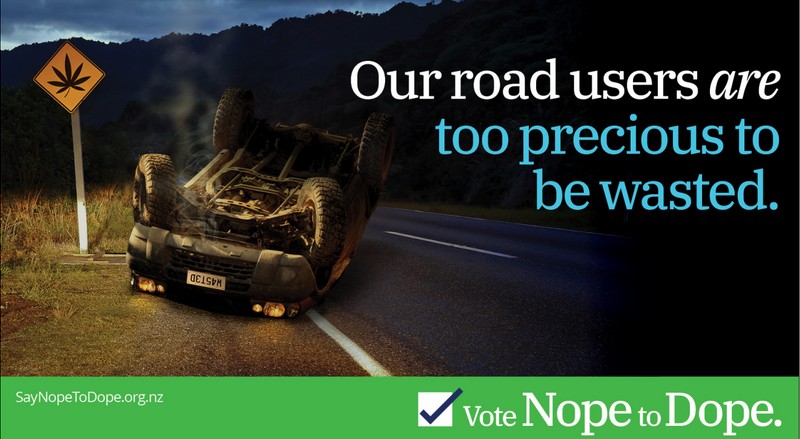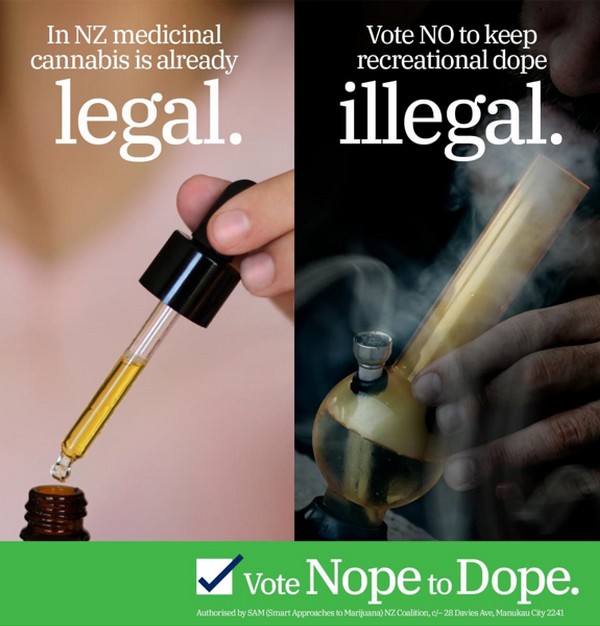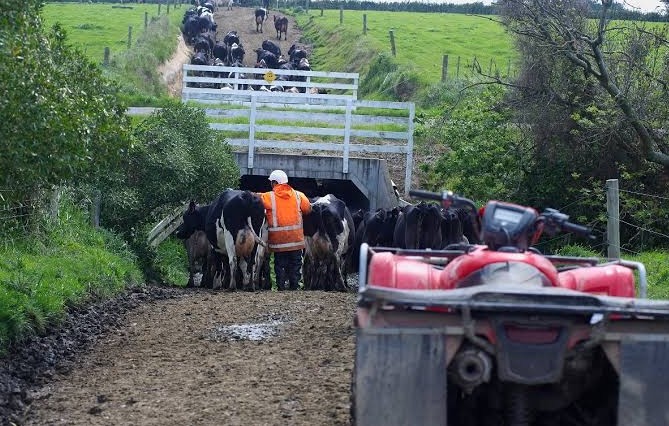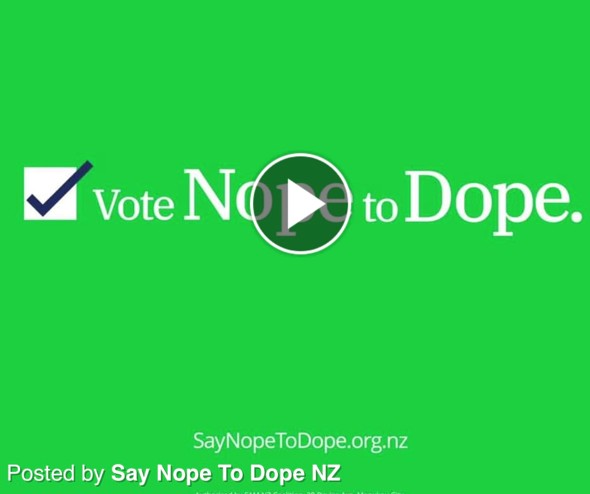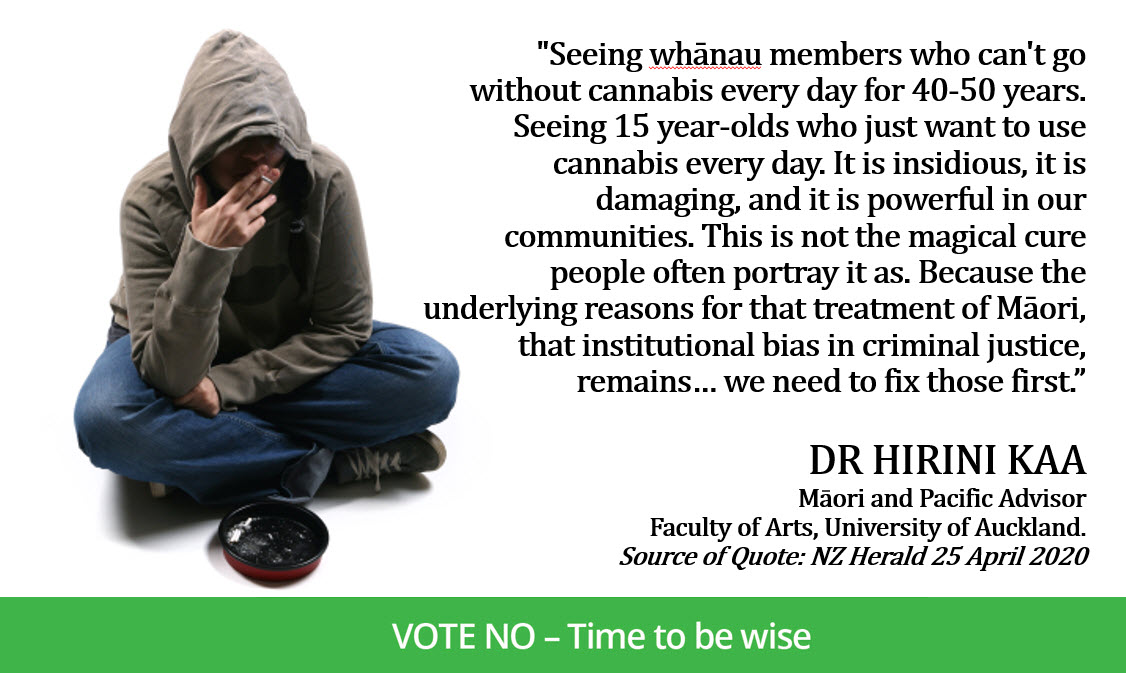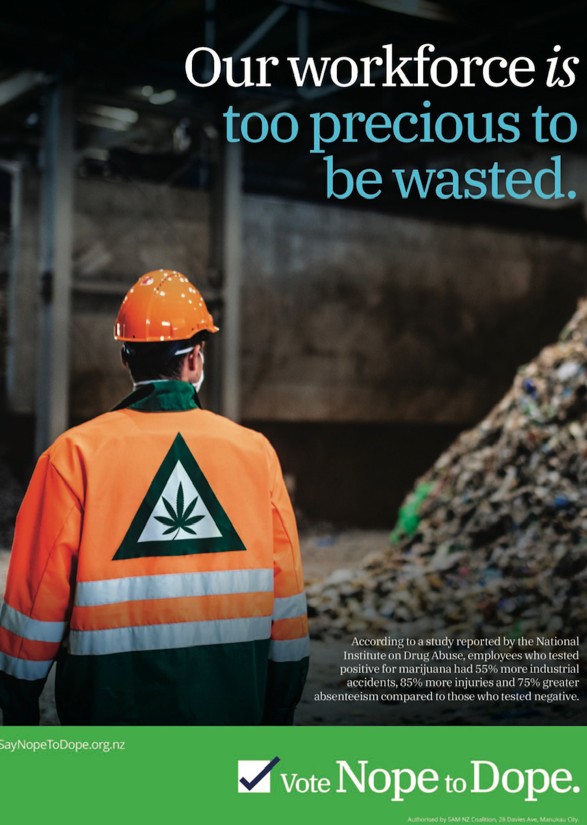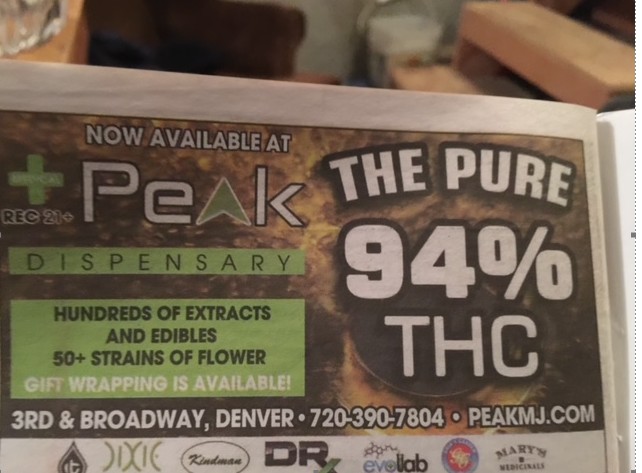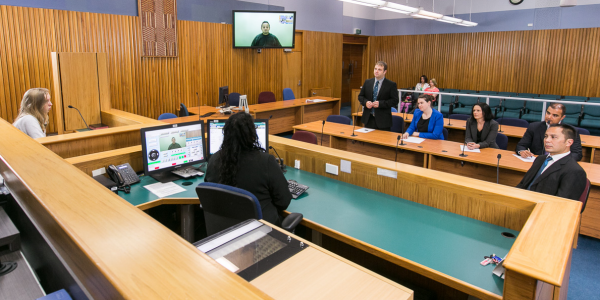
ERIN SHIN (her nickname) is a lawyer working at a commercial law firm in Auckland. She graduated from the University of Auckland in BA (English/ Politics) and LLB. She is a member of the Asia-Pacific chapter of the J Reuben Clark Law Society and she has special interest in Religious Freedom and issues relating to International Security. In her spare time, she enjoys keeping active and listening to political lectures.
Recently I was invited by a friend to watch a three hour YouTube discussion between Joe Rogan of the Joe Rogan Experience and Johann Hari on the topic of drug law reform. I thought it would be very relevant considering our referendum coming up. After watching the video, my friend felt that the legalisation of all drugs in New Zealand would not be such a bad idea. This opinion piece is a summary of Johann’s main points followed by my counter arguments on why cannabis, as well as all other “criminal” drugs under our Misuse of Drugs Act should remain under the criminal penal system in New Zealand. This is also a personal response to my friend who like many others in good faith are asking the right questions, but remain unsure.
Johann Hari is a Scottish-Swiss journalist who travelled all over the world speaking to addicts and looking at the drug laws of many different countries. What I appreciated most was how Johann humanised the addicts and their experiences. I agree with Johann’s call for more compassionate treatment for those battling addiction and a need for deeper social dialogue on drug law reform and the way we address addiction in our policies. I also appreciated the insight of what other countries did to address this issue.
Addiction is not just a chemical issue
Johann argues that the source of addiction is not driven solely by chemical reactions in our brain. The physical explanation on its own is not a sufficient understanding of why people become addicts because there is so much more to addiction than exposure to the drug itself. For example, your grandmother on a high dose of heroin after a hip surgery will not get addicted to this Class A drug, but addicts on much lower forms of drugs are. Why is that, he asks. If addiction was solely based on the chemical reactions of our brain to a drug, the potency of that drug should be the only relevant factor in determining who becomes and does not become addicted. Another example Johann shares is the fact that many United States soldiers were taking heroin while serving in the jungles of Vietnam. The government was worried that soldiers would go home with addiction problems, but to their relief and surprise most did not, because life at home was that much more worth living than the immediate realities of war. These examples tell us that addiction is also a deeply psychological, emotional, social and cultural matter, and not purely chemical or scientific.
I appreciate Johann shedding light on these aspects to addiction. But I find his point limited in its application to the extent that I do not think anyone in New Zealand has ever argued that addiction was purely a physical or chemical phenomenon. In fact, the push for sentencing reforms from punitive to more restorative measures, the availability of addiction recovery programs in prisons (at times mandatory, and available voluntarily), addiction recovery programs for the general public, the clean syringe programs, our social welfare system, free counselling over the phone, the discretionary nature of charges for possession and use of drugs all point to the fact that New Zealand as a country has not approached this issue in a purely “scientific” way.
The Rat Cage
Johann shares the experiment of the two rat cages to strengthen his position for the legalisation of all drugs. In the first cage, the rat in isolation has access to two bottles of water, one is drugged and the other is not. In this empty cage, the rat quickly becomes addicted to the drugged water, overdoses and dies. In the second cage the rats are given a rat park and other rat friends. Surprisingly, when placed in this rat community, the rats did not want to drink the drugged water. And even if they did, it would drink intermittently and never overdosed.
I agree this example highlights the need to come together as a community in order to address and beat the harmful effects of drugs. It highlights the social factors that add to a person’s susceptibility to drug addiction. I believe it also provides an allegory of the realities of societal inequalities rooted in poverty. On this, I just want to add a further dimension to the situational narrative. I recognise that many are born into circumstances that I can only imagine are terrible at the best of times. The realities of broken homes, abuse, childhood traumas, mental health issues are real and unthinkably painful, and the alternative of sedative escapism may seem to be for the sufferer, the most humane option. However, as important as the experiences of those in the first cage are, I would say (without any pride) that a majority of us live in the second cage. A cage that represents a life of comparative privilege, a life which includes responsibilities (family, societal, employment, religious or otherwise), a life full of meaningful relationships, and one full of hope and a sense of purpose for the future ahead. In both cages, the cannabis “water” has a big red cross next to it, albeit a red light many ignore. Pursuant to section 7 of the Misuse of Drugs Act 1975, the possession and use of cannabis (Class C) is a criminal offence and anyone guilty of it faces a fine up to $500, or a maximum prison sentence of up to 3 months.
The NZ Drug Foundation claims that around half of Kiwis aged 15-45 admit to trying weed at least once in their lifetime. So I am not saying that the value of deterrence by criminalisation is watertight, or that it needs to be. In fact, I would say statistics point towards a populist acceptance that weed is “not that bad” especially on the scale of criminal culpability. My only criticism of the way that Johann frames this example in his arguments is that he centres his reasoning around the need for decriminalisation from the perspective of those in the first cage only, and from the perspective of only those who are already heavily addicted. I agree that for those people the threat of a criminal conviction is ineffective. However, his arguments fail to address not just the perspectives of the majority of people living in the second cage, but also the effectiveness of criminalisation on the majority of people who are not currently addicted. The questions he fails to balance with his arguments are as follows. What about the people who steer well clear from the possibility of addiction due to the hopes and dreams they may forfeit as a result? Are those values worth protecting in and of themselves? Does the criminalisation of drugs add any weight to its deterrence? If so, how much value or weight does it provide in our decision making? How much public health costs are we saving from those who stay well away? I recognise that deterrence may be difficult to quantify. However, my argument is not that deterrence is the only reason people stay away from drugs, but if we are looking at changing a whole system from what we have had for so long to something we claim will be better, I argue that we need a fuller and more robust evaluation of the current system before radical changes are made.
The need for connection and getting rid of shame
Johann explains that the opposite of addiction is not sobriety, it is connection. Inflicting emotional pain and shaming addicts only feeds that addiction. Imprisonment and solitude increases the deprivation of things that make life meaningful. Addiction is often linked to past traumatic experiences which add layers of complexities to the addiction. By shaming, stigmatising, and creating barriers to re-connection it makes it more difficult for addicts to recover and those underlying issues are unable to be fully addressed. Johann is certain that only compassionate treatment and counselling helps this recovery process and the puritanism or moral high-groundedness of criminalisation and labelling is not a good approach to take.
I do not claim to be an expert on what helps and does not help our addicts. Neither do I fully understand the extent of the “best” type of treatment one would require. But I do agree that humanised, personal connection would be necessary for anyone recovering from any sort of addiction and that imprisonment and solitude on its own would not be an effective approach. In saying so, I do not think that this is the only purpose and value of the Misuse of Drugs Act. I am not saying Johann’s considerations are unnecessary, rather that the purpose of the Act is so much broader and wider than just “helping out the addicts.”
Puritanism and moral high-groundedness is an approach taken on many legislative issues, not just our laws on drugs. The reality is that our laws are made up of musts, and must nots, of shall and shall nots. Puritanism is a system of values based on a belief that if one acts in a “fallen” way, shame will follow because by nature, we are social creatures. Call this self-righteousness if you will, but this value acts as an effective deterrence for many who do subscribe to it, and it is a universal principle of our criminal justice systems. From a social psychological point of view, where public shame is attributed to a particular behaviour, people (and I mean especially those in that second rat cage) are less likely to carry out undesirable or anti-social actions. Puritanism is a fundamental reasoning for the need for justice and law itself. No where else in secular society is there a stronger call for the separation of right from wrong, of the sanctioned from the taboo, than in our criminal code. What I fear we are doing when we decriminalise something that society agrees and knows should be kept strictly minimised and controlled is to abandon the value of puritan deterrence altogether. Instead of fighting to break down the “wrongs” of the current system to make it more “right”, we are giving up on that fight altogether and instead re-defining the wrong as a sufficient substitute of the right. Although social factors do apply, drug addiction is no respecter of persons. It does not care if you are a white, high-flying, National-voting conservative. Everyone is susceptible to addiction, and I am weary that decriminalisation will send the wrong message to the younger generation that cannabis is “not harmful”, that it is something that is “okay” or “normal” or just another option to smoking. I am by no means advocating a full puritanistic approach to drug law reform, neither am I saying laws should serve the privileged over the disadvantaged. I am merely calling for the need to recognise that the law seeks to serve all people for the greater good, and a more critical understanding of the psychological and social nature of everyone it seeks to regulate.
I would also argue that by no means has New Zealand taken a strictly puritanistic approach to drug control. As of 19 August 2019, through the Misuse of Drug Act Amendment Bill, police must avoid prosecution of possession and/ or the use of drug charges in cases where a health-based approach may be more beneficial. Section 7(5) of the bill reads “…it is affirmed that there is a discretion to prosecute for an offence against subsection (1)(a) (possession or use), and a prosecution should not be brought unless it is required in the public interest”. I would even argue that well prior to this amendment, police in practice have been very reluctant to seek prosecution solely for possession or use. From the short 11 months working at the Hamilton District Court, I saw first hand that most drug related offences were for those participating in the organised manufacture and distribution of drugs. Where you have convictions for possession, the charge was one of a number of other charges against a person offending under the influence of drugs (assault and reckless driving being the most common just from what I saw). Not once did I see a person imprisoned solely on the grounds of possession of any drug, and rarely did I see a conviction of possession only, unless a negotiation had been made prior where the more serious charge was dropped in favour of the lighter charge of possession. Rather than the question of legalisation, I argue that the questions we should instead be asking are, are there further reforms we can make to encourage and incentivise the employment and full re-integration of the addicts and convicted? What are the barriers we still need to address to better assist our returning addicts? How can we minimise the social stigmatism and the shame placed on the addicts?
There has been criticism that our recent amendment is not good enough, that the police should in fact take into consideration the interest of the individual being charged as opposed to the interest of the general public at large. Perhaps this is a valid criticism which I won’t get into here. But I would say that the recent amendment clearly highlights the availability and scope for further reform that is both sensible and realistic. This amendment led by the Green party was heralded as a major step forward. And I would agree that it bridges the gap between the realities of cannabis use with the need for a clear “puritan” expectation against the misuse of cannabis. This bill came into effect only months after the Labour government’s announcement that a $1.9 billion “well-being budget” will be available to address the nation’s mental health and AOD (alcohol and other drug) addiction. I admit this is a recent development, and we are yet to see further progress on this. I personally think it is a positive progress and importantly, a manageable one in the right direction and in the right domain. I note that the National party’s policy towards AOD addiction support for those convicted does not differ greatly from Labour’s. So it seems as though a general consensus between the major parties can be reached on this important issue.
What about Switzerland and Portugal?
In the discussion, Johann uses his hometown Switzerland as a successful example of drug reform. He explains that there was a major opioid crisis in Switzerland from the 80s right into the early 2000s. The Ministry of Health in Switzerland pushed for the legalisation of opioid as a way of addressing Switzerland’s opioid crisis. Clinics were created where addicts could have the safest possible version of the drug, and carry on with their lives with support and connection. These are not rehab centres and no pressure is applied to the addict to cut back on their intake. Johann claims that almost everyone he met there did in fact cut back overtime. And since drug law reforms, no one has died from an opioid overdose. Swiss people are quite conservative he says, but nearly 70% of the citizens voted to keep the reforms because of the huge reduction in crime they saw on their streets. Portugal was another example of a legalisation success story briefly mentioned.
For both countries, the reforms were seen as a radical overhaul after months of policy research and extensive public health advice. The changes were in response to what each respective government felt was a drug crisis. I simply do not think New Zealand has reached a level of a “drug crisis” that is proportionate to the extreme reforms such as the one currently proposed. In 2019, 75% of charges issued led to a conviction and the most common convicted offences were the following: offences against justice (such as breaching a community sentence) 23%, traffic offences 22%, theft 11%, and assault 9%. Of all convicted charges in 2019, drug related offences made up just 6% of those charges (Ministry of Justice Statistics 2019). Since 2009, New Zealand’s overall conviction rate has continued to fall and in 2019 the rate of conviction fell another 4% compared to its previous year. In light of such data, I believe New Zealand has made the appropriate reforms that have been proportionate to the drug related problems we are facing, so without diminishing the successful results of those other countries, I believe that it does not add any precedential value as to whether New Zealand should legalise cannabis.
Furthermore, the proposed cannabis legalisation bill in New Zealand seeks to go one step further than the reforms carried out in Portugal. Using the rat cage example, New Zealand seeks to remove that big red light from the drugged cannabis water, and then add a “for sale” sign over it, while the cannabis authority restrictions barely prevent us from adding bright neon “two for one sale” signs. Simply put, our referendum seeks to not just decriminalise the use of cannabis but also legalise it, and most significantly, commercialise it by “strict” regulation. Our bill seeks to take the following measures: create a system of licensing for vendors, limit the maximum potency of products, put a ban on all advertising, restrict buyer age to 20 years or older, obtain government control of the product prices via taxes on THC, and also limit the total amount in the market via production caps.
I am heavily sceptical of these regulations.
I find it difficult to imagine the reality of a successful tightly-regulated cannabis regime where so many aspects of the line of production are controlled, from the growth of the plant, the sourcing of ingredients, to the sale, and finally the consumption of the product. The government seeks to have a hand in all aspects of cannabis commercialisation. This is by no means a traditional free market model, but it is nonetheless a profit generating one that will not be free from lobbyists who over time will push for de-regularisation. The practical realities of administration and enforcement are massive and remain undiscussed. How will the government control the ban on cannabis advertising especially with the availability of social media? How will it limit home-grown cannabis to a maximum of two plants, or prevent “dangerous” production methods without overreaching citizens’ civil liberties? How will it limit the maximum daily purchase to 14 grams per person? Which portfolio will the regulatory body fall under, the Ministry of Business? Ministry of Health? Ministry of Justice? Inland Revenue? Whatever the structure of the new authority, the sheer volume of work required creates major risks and takes us into uncharted waters that not even the Portuguese provide a clear precedent for.
The war on drugs creates a war for drugs
Johann argues that legislation allows a government to reclaim the black market, bringing the issue from the dark into the light. He uses the examples of Central and South American countries such as Columbia and Mexico where the cartel activities are on a level that we, in gun-free New Zealand, can only label as scary. Johann argues that the problem with taking a war approach to drugs is that criminalisation fuels the criminal activity. He also explains that the reason why THC levels in cannabis are so much higher and more potent than before is because of its criminalisation. The more prohibited something is, smugglers will bring in stronger products in more compact spaces.
My question is, why is it not possible to have a dual approach under one system? A “tough” justice approach to manufacturers balanced with a more health and wellbeing model for the end user. New Zealand as a country has explicitly rejected Trump’s call for a war on drugs. Jacinda Ardern shared this position at the United Nations, stating that we will rather take a wellbeing approach. This declaration was followed by substantive government funding so I would argue Johann’s criticisms bear minimal weight for us. I also question the effectiveness of Johann’s trust in a government’s ability to retake the back market. Even after the legalisation of cannabis, I would not be very surprised to find that a black market for the product still exists. Dealers who do not wish to be constrained by the cannabis authority will continue to procure and sell cannabis illegally, and should the government relax on enforcement, cannabis with higher potency at competitive prices and with more attractive “designs” (e.g. confectionary cannabis) will be sold leaving those most vulnerable still at risk.
I recognise there has been criticism by Law Professor Kylee Quince that the “discretionary” nature of the August 2019 amendment leaves room for personal judgments and bias of the police officer. The criticism is that there is a disproportionate risk of prosecuting Maori in comparison to non-Maori especially where police are left to make such a judgment call. It is also recognised that police are not in fact social workers, and this amendment puts an extra burden on officers who are required to choose whether he/she will pursue a charge. To that I say police are already making judgment calls at each stage of the criminal justice process, from apprehension and arrest right through to sentencing. This discretion is also not unique to police, but is exercised by judges, the parole board, and social workers. There is a considerable degree of built-in discretion with respect to decision making for all criminal offences at every step of our justice system. So if personal and racial bias is in fact a problematic reality, this is not a criticism uniquely applicable to drug related charges. The amendment encourages no further personal or racial prejudice than to what was already present. Furthermore, if this is something the law can and should address, it only adds to my argument that there is much scope for further reform within the criminal justice “umbrella.”
The positives of cannabis
Johann says that nobody talks about the positives of cannabis. He claims it makes people (not patients on medical cannabis) more humble, and kinder. It makes food and sex taste better. I will not get into the negatives of cannabis. I think if the stuff was as good as Johann claims, our doctors would be recommending its daily dosage. Doctors do not do so for common sense reasons, but I do know they do advise us to cut down on our alcohol, coffee and tobacco intake. I will also not get into the medicinal use of cannabis as I know that there are further ethical problems generated from this topic alone.
Protecting our children
Johan argues that we need to pull out drugs from dealers who do not care about our children, and put them instead into the hands of professional vendors who do ID checks. An experience is shared of a police officer who had an “epiphany” for why drugs should be legalised. This American officer shared an encounter he had with a teenager while carrying out an undercover drug bust. The teenager came up to the officer (while he was undercover) and asked the officer to buy him alcohol from the nearby liquor store. When the officer declined, the teenager then went to the dealer and bought drugs instead.
I argue that the experience of the undercover cop is taken completely out of context, and also insinuates that teenagers are more likely to obtain illegal products that are harmful, as opposed to obtaining legal products that are just as harmful. I would argue strongly that this is not the case. Whatever illegal substance your child is on, alcohol or tobacco is being used at a much higher frequency. It is well understood that cannabis is the third most common form of drug used (excluding caffeine). The first and second most consumed drug being alcohol followed by tobacco and I would argue that the legalisation of those two products directly contributes to the higher level of consumption by both the underaged as well as the general public. Should cannabis become commercialised, the only outcome we can expect is an increase in the general level of consumption. We may even come to a point where we see weed stores as frequently as alcohol stores, and as cannabis consolidates its market presence, it may even overtake alcohol or tobacco in its popularity and demand. Just as much as age restrictions fail to protect the underaged from alcohol and smoking, teenagers will find a way to skirt age restrictions on cannabis.
Mental illness and drug addiction
Johann finally argues that if drug addiction is a mental illness and there are many other mental disorders we currently do not criminalise, why do we only pick on drug addicts? To that I say New Zealanders are well aware that mental health and AOD addictions are intimately connected. What we cannot ignore is that both of these factors are also undeniably connected to one’s susceptibility to criminal activity. Our Corrections Services statistics report that 91% of all prisoners suffer from mental illness and/or from AOD addiction. We are not saying that all drug addicts become criminals. But I do think we need to make it clear that while the criminalisation of drugs does not create criminals, too many criminals are drug dependant hence our collective agreement for the need to strictly control drugs (yes, even alcohol and tobacco). Contrary to the “us versus them” narrative Johann uses, I know many Kiwis recognise and support the need for consistent funding and resource to support our addicts. But again, I believe the best place for this to occur is within a carefully controlled environment of our very own justice system. We cannot leave the wellbeing of our most vulnerable to the laws of supply and demand, and the calculations of profit and loss characteristic of a commercial market. We cannot play politics with the health and wellbeing of our people. For these reasons I will be voting, No.
REFERENCES
https://www.justice.govt.nz/assets/Documents/Publications/Ho7aga-Adults-convicted-and-sentenced-data-notes-and-trends-dec2019-v3.0.pdf
https://www.corrections.govt.nz/resources/research_and_statistics/over-representation-of-maori-in-the-criminal-justice-system/2.0-criminal-justice-system-bias-and-amplification/2.2-prosecutions-and-convictions
https://www.corrections.govt.nz/resources/strategic_reports/breaking_the_cycle_our_drug_and_alcohol_strategy_through_to_2020
https://www.moh.govt.nz/notebook/nbbooks.nsf/0/b0d88c5d60fc5cb8cc256ad1006ffa51/$FILE/drugs-2001.pdf

